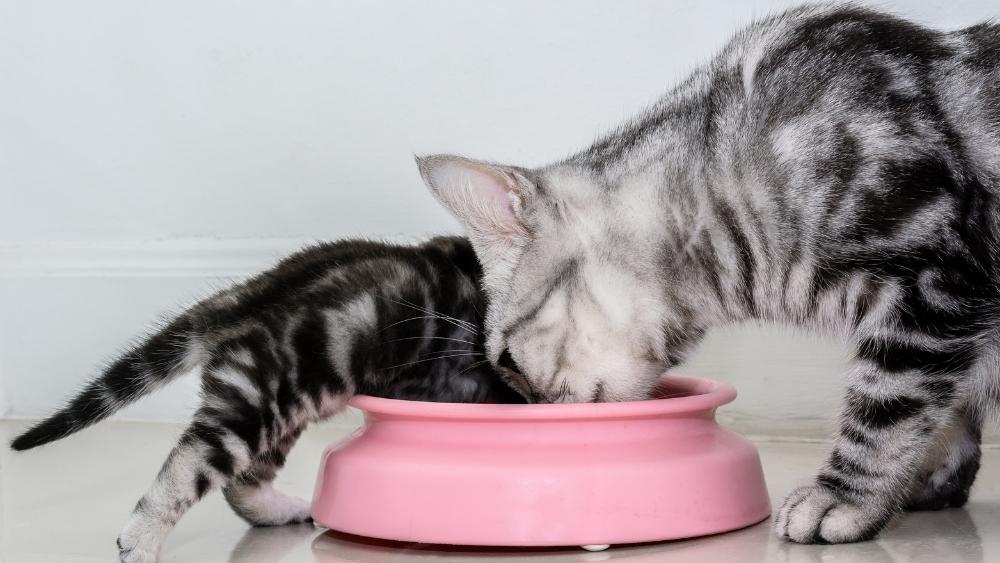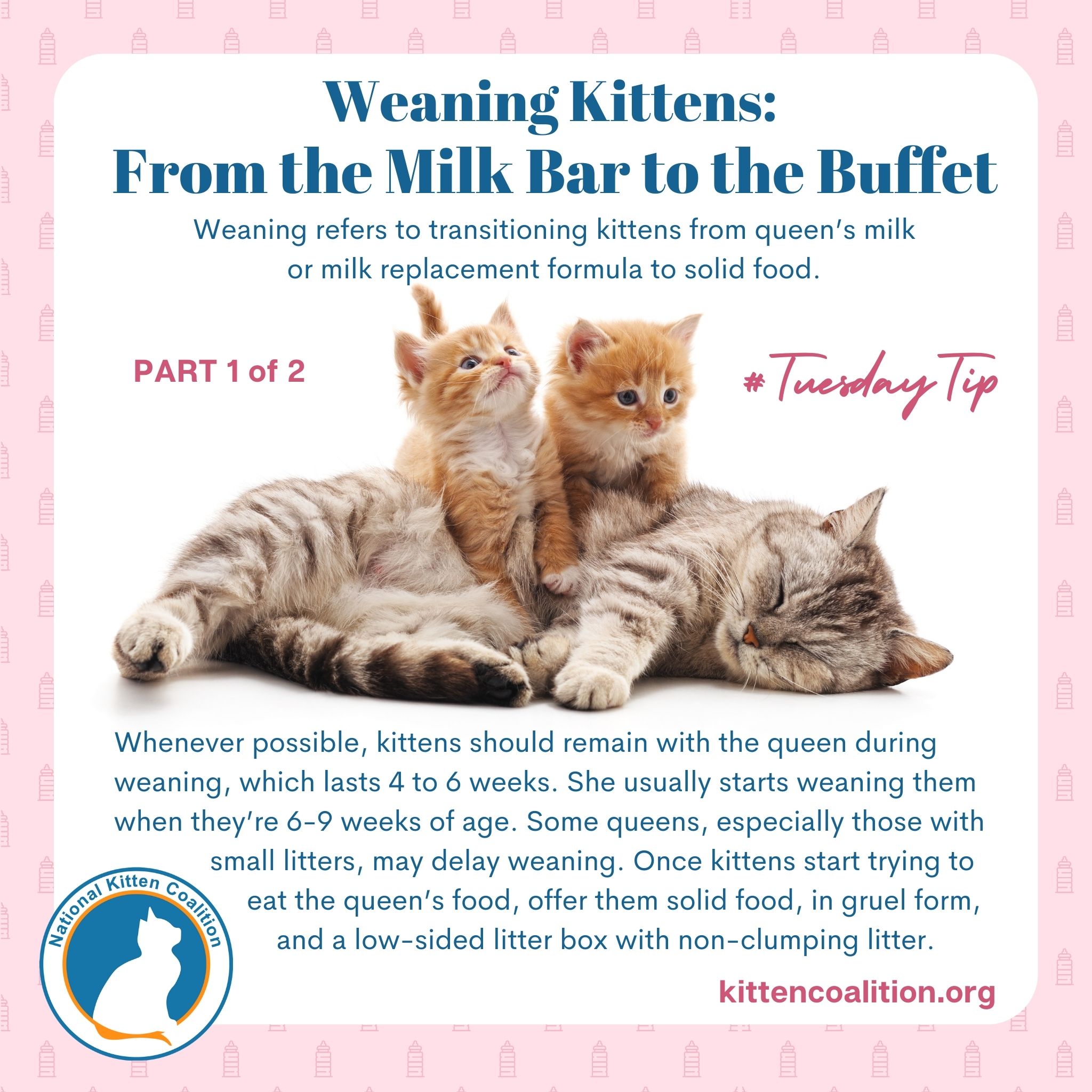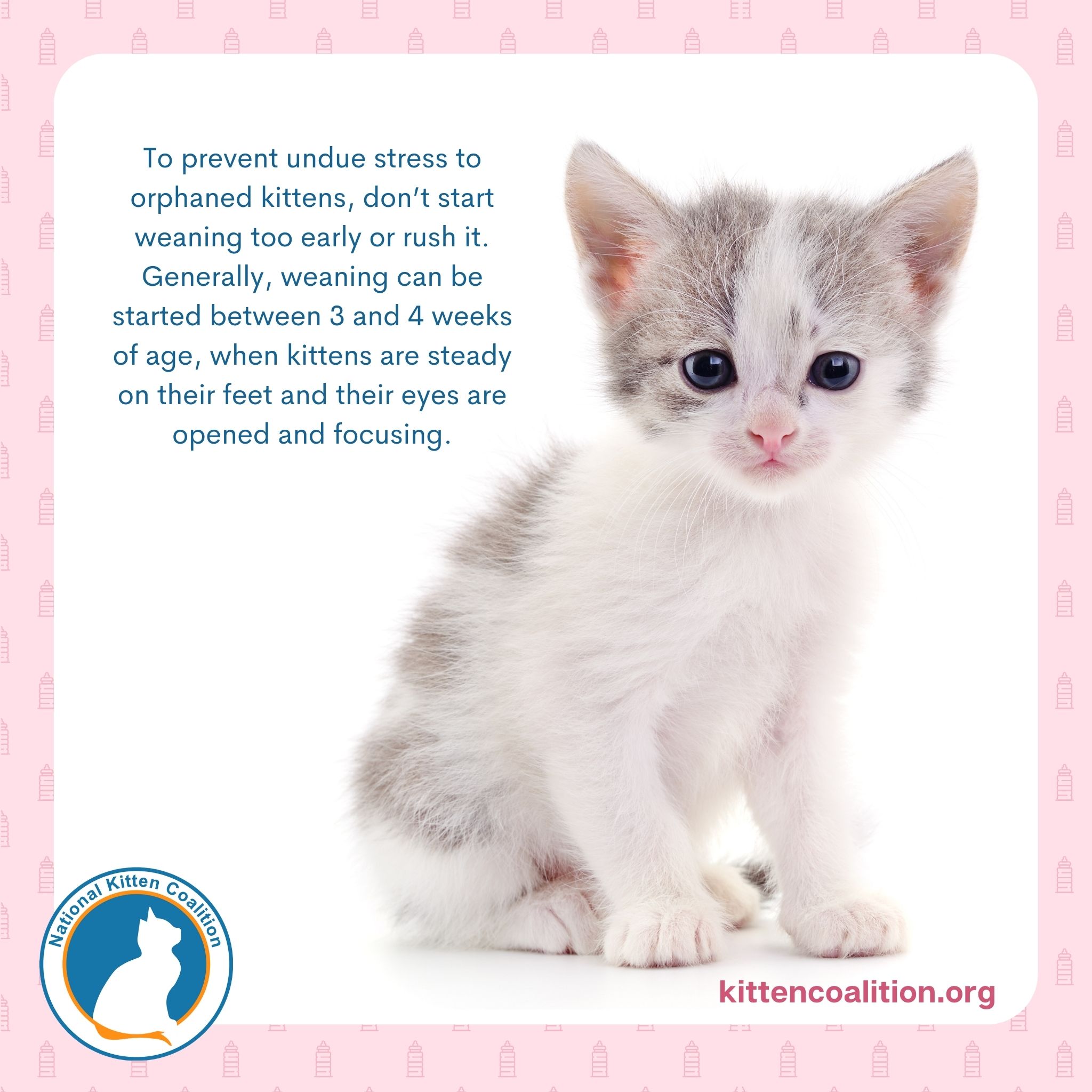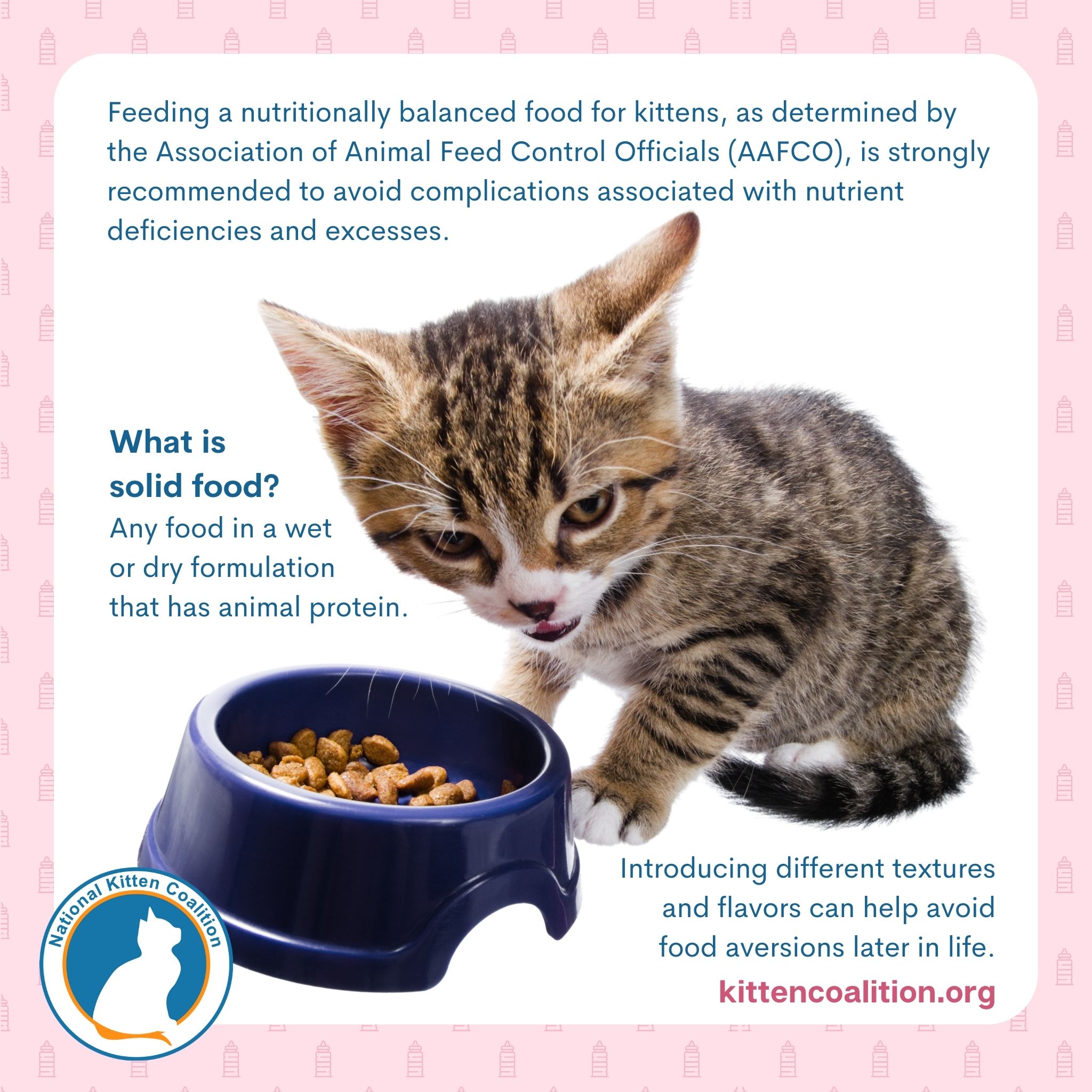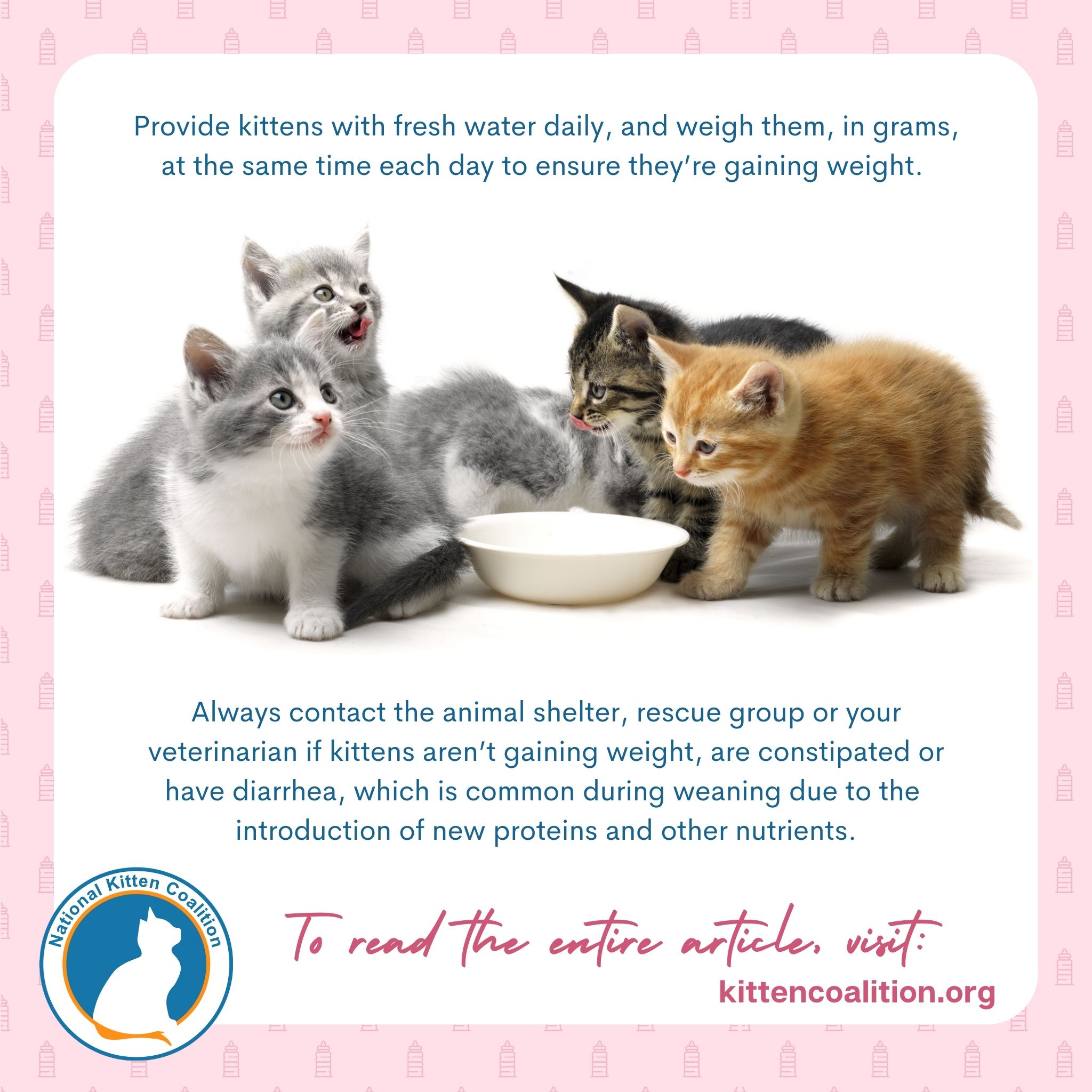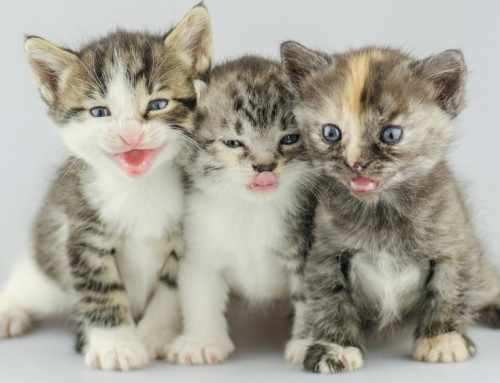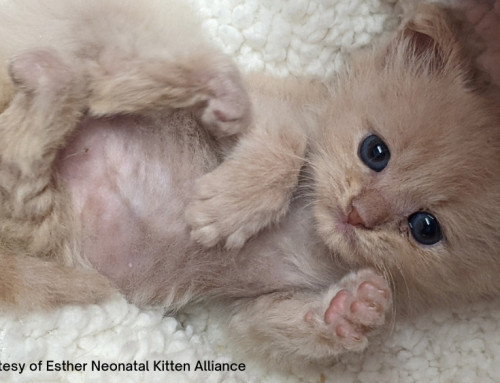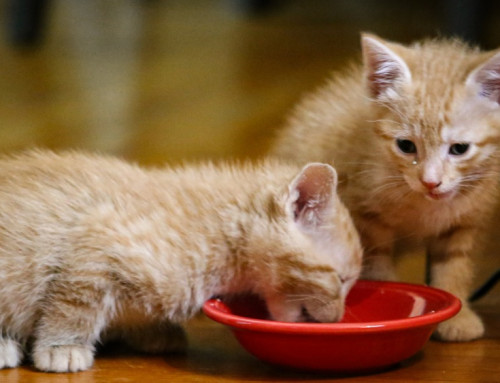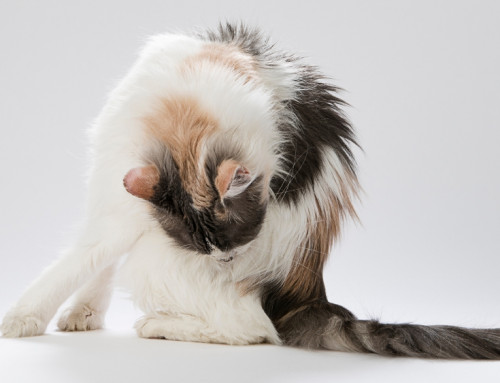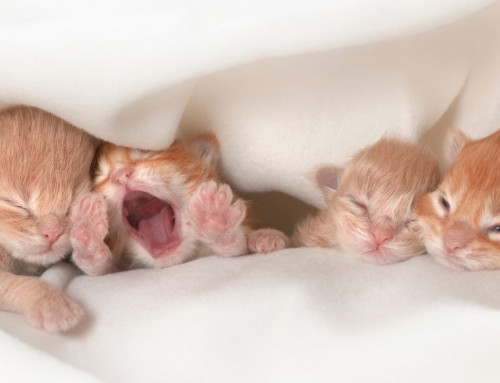Share this resource or email it to a friend!
In part 1 of this 2-part series, we discuss what weaning is and when it occurs. In part 2, we discuss different weaning methods.
Weaning, transitioning from the queen’s milk or milk replacement formula to solid food, is a significant, and often stressful, process for kittens. Prior to weaning, neonates require frequent access to the queen’s milk or milk replacement formula via bottle feeding; they can only urinate and defecate when stimulated by the queen or a caregiver.
Queens usually begin weaning kittens when they’re 6-9 weeks of age, which coincides with the eruption of the kittens’ deciduous teeth. Some queens, especially those with small litters, may delay weaning. Typically, weaning takes 4 to 6 weeks.
During weaning, a queen discourages her kittens from nursing by not presenting her belly and moving away when kittens try to nurse. You can support the queen’s efforts by providing a bench or table that’s too tall for the kittens to reach her.
Whenever possible, kittens should remain with the queen during the weaning process, as they will learn many things by observing her, including how to eat solid food and use the litter box. Once a kitten has started trying to eat the queen’s food, the process of offering them solid food can begin.
To prevent undue stress to orphaned kittens, it’s best to not start the weaning process too early or rush it. Generally, when kittens are steady on their feet and their eyes are opened and focusing, solid food and a litter box can safely be introduced.
Orphaned kittens can begin transitioning to solid food between 3 and 4 weeks. Most animal shelters and rescue organizations consider healthy kittens ready for spay/neuter and adoption at 8 weeks of age, by which time they should be eating solid food.
What is solid food? Any food that has animal protein and is either in a wet or dry formulation. Introducing different textures and flavors to kittens can help avoid food aversions later in life. For example, if kittens are only exposed to dry food, kibble, it may be difficult to get them to eat a therapeutic wet diet as adults.
Feeding a nutritionally balanced food for kittens, as determined by the Association of Animal Feed Control Officials (AAFCO), is strongly recommended to avoid complications associated with nutrient deficiencies and excesses.
A kitten’s stomach is relatively small, and they’ll usually only eat until they are satisfied; if they’ve experienced starvation, they could act ravenous all the time and overeat.
Always provide kittens with fresh water, and weigh them, in grams, at the same time each day to ensure they’re gaining weight. If they become constipated, you may need to add more water to their food. If they have diarrhea, common during weaning due to the introduction of new proteins and other nutrients, probiotics may be prescribed.
Always contact the animal shelter, rescue group or your veterinarian if kittens aren’t gaining weight or continue to be constipated or have diarrhea.
Part two will be published on November 1, 2022.

